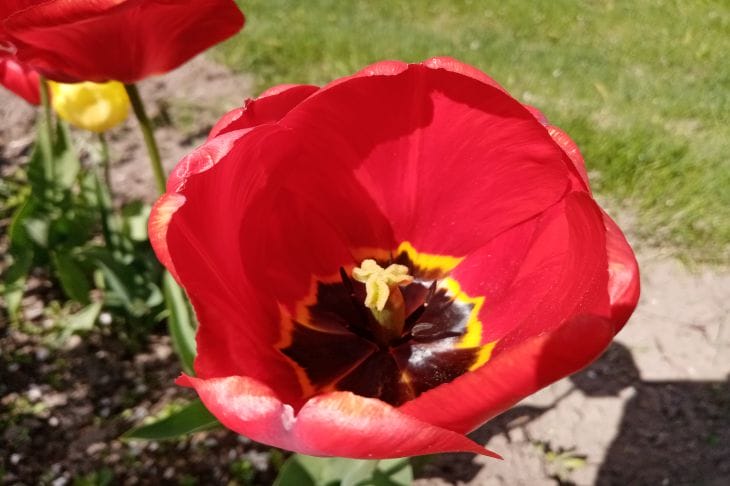Autumn marks the beginning of a new cycle in the life of a gardener.
When the leaves begin to turn golden, it's time to start thinking about the garden's spring splendor.
Planting tulips in the fall is a key step in creating a vibrant palette for next spring.
Selecting Tulip Bulbs
The success of spring flowering largely depends on the quality of the planting material. When choosing tulip bulbs, you should pay attention to their size and condition.
Large, dense bulbs without damage or signs of disease will provide strong and healthy plants. The optimal bulb diameter for planting is 3-4 cm.

Soil preparation
Tulips prefer light, fertile soils with good drainage. Preparation of the site begins with removing weeds and loosening the soil to a depth of 30-40 cm.
Adding compost or humus improves the soil structure and enriches it with nutrients. It is important to avoid fresh manure, which can cause the bulbs to rot.
Planting dates
Determining the right time to plant tulips plays an important role in their development. The optimal period is considered to be 4-6 weeks before stable frosts.
In central Russia, planting is usually carried out in late September - early October. The soil temperature at this time drops to 10-15°C, which promotes the formation of the root system before the onset of cold weather.
Depth and planting pattern
The depth of planting tulip bulbs depends on their size and soil type. A general rule is: the depth should be equal to three diameters of the bulb. On light soils, the bulbs are planted deeper, on heavy soils - closer to the surface.
The distance between bulbs should be 10-15 cm for large-flowered varieties and 5-10 cm for small-flowered varieties.
Planting technique
The process of planting tulips requires accuracy and attention to detail. On the prepared area, holes of the required depth are made. A small mound of sand is poured at the bottom of each hole to improve drainage.
The bulb is placed on a sand cushion, slightly pressing it down with the bottom. Then the hole is filled with soil and slightly compacted.
Mulching and watering
After planting, it is recommended to mulch the tulip bed with a 2-3 cm layer of peat or compost. Mulch protects the soil from freezing and retains moisture.
Watering is carried out immediately after planting, if the soil is dry. Further watering is not required, as autumn rains will provide the necessary moisture.
Caring for plantings
In the first year after autumn planting, tulips do not require special care. In the spring, when the first shoots appear, the bed should be cleared of mulch for better soil warming.
During the period of active growth and budding, plants are fed with complex fertilizers.
After flowering, the stems and leaves are not cut until they are completely yellow, so that the bulbs accumulate nutrients for the next season.
Protection from pests and diseases
Disease prevention begins at the stage of bulb selection and soil preparation. Healthy planting material and properly prepared soil reduce the risk of disease development.
To protect against rodents, it is recommended to plant tulips in special mesh baskets or treat the bulbs with repellents.








